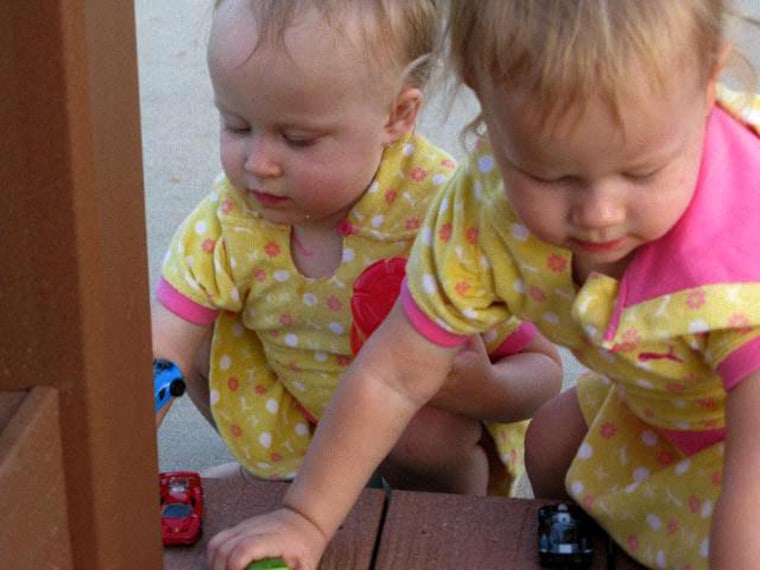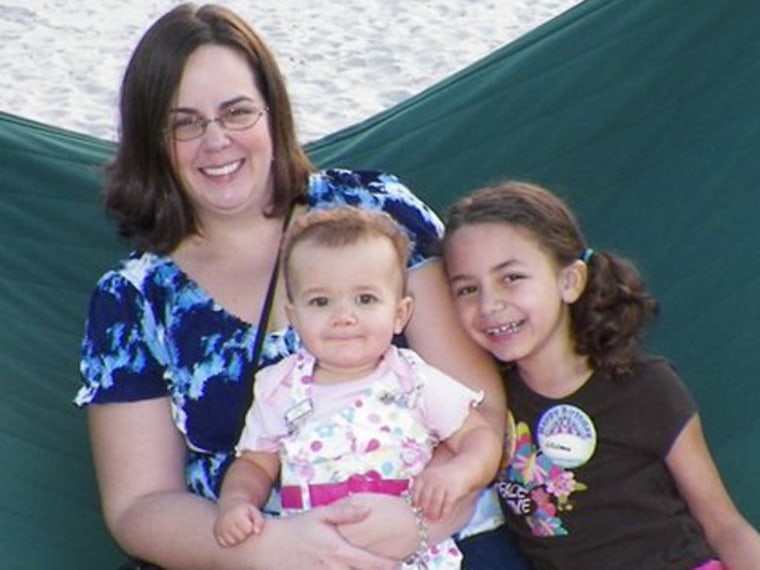For weeks after the accident, Candice Johnson couldn’t sleep. Over and over, she kept reliving the moment last October when she dropped her 9-month-old daughter down a flight of stairs in their Pennsylvania home.
“I kept seeing us falling,” she said. “I was carrying her down the steps and my flip-flop broke.”
Johnson slipped and Annika flew out of her mother’s arms, striking her head. Doctors at a trauma center diagnosed a skull fracture and bleeding on her brain. Five months later, the child has recovered, but for Johnson, taking the stairs will never be the same.
“It was an accident, but it’s hard,” said Johnson, 34, of Sinking Spring, Pa. “You can’t help but blaming yourself.”
That may be true, but there’s plenty of blame to go around. New research shows that a child younger than 5 is treated for a stair-related injury every six minutes in a U.S. emergency department, on average, and being carried on the stairs accounts for nearly a quarter of stair injuries in children younger than 1.
Read more: TODAY on how to make stairs safer
“We were surprised by the numbers,” said Dr. Gary A. Smith, director of the center for injury research and policy for Nationwide Children’s Hospital in Columbus, Ohio. “It sends a wake-up call to all of us.”
In the first nationally representative study of stair injuries in young kids, Smith and his colleagues found that nearly 932,000 children younger than 5 were hurt in stair accidents in the U.S. in the decade from 1999 through 2008. On average, that’s more than 93,000 kids a year, or about 46.5 injuries for every 10,000 children under age 5, according to the study published in the journal Pediatrics.
The good news is, the number of injuries each year fell during that period, dropping by 11.6 percent by 2008, mostly because of a sharp decline in stair injuries tied to baby walkers, which once hurt some 25,000 children a year.
Voluntary safety standards enacted in the mid-1990s and wider awareness about the dangers of baby walkers helped fuel that decline, cutting those injuries to about 1,300 a year, Smith said.

But the bad news is, nearly 90,000 kids still were hurt in stair accidents in 2008, largely because of preventable factors linked to stairway design, consumer awareness and parental education.
'Incredibly awful'
Kate Canterbury, 36, of Columbia, Mo., blames the steep stairs in a three-story condo in St. Paul, Minn., for her tumble three years ago while carrying her twin daughters, Evie and Jane, who were then 18 months old.
"It was incredibly awful because I knew in that split second that I had to let one go or all of us would fall," Canterbury recalled.
It wasn't a matter of choice, but momentum. She dropped the twin in her left arm, which was pointing downstairs. The toddler fell while Canterbury and the other twin slid down the steps.
"She immediately started crying, so I knew she was OK," Canterbury says. "I just felt so guilty for letting go of her."
She's not certain and doesn't want to say which of the twins, now 5, she actually dropped. "I don't want them coming back at me, saying, 'You loved her more,'" Canterbury said with a laugh.
She's just relieved -- and feels lucky -- that no one was hurt.
About three-quarters of kids who were hurt on stairs suffered injuries to the head and neck, researchers found, and nearly 3 percent of the children were hospitalized.
It’s not clear how many children may have died as a result of the injuries because the data obtained from the National Electronic Injury Surveillance System, or NEISS, don’t track deaths, Smith said.
Most of the harm, about 35 percent, came from soft-tissue injuries, followed by cuts, about 26 percent, and closed-head injuries, about 20 percent. Fractures, dislocations and other injuries accounted for the rest, the study showed.
Almost all of the injuries, nearly 95 percent, occurred at home, and about 88 percent of the injuries, or 817,000, were caused by simple falls. Still, children jumping or riding toys downstairs accounted for 2.6 percent of injuries, and another 2.7 percent were still hurt while using baby walkers.
“It’s a mixed message because mobile baby walkers are still sold in stores,” said Smith, noting that studies have shown the walkers not only are dangerous, they also delay children’s progress in walking and learning. “It’s a device that really has no redeeming value,” Smith added.
Particularly worrisome, he said, were the injuries to babies being carried on stairs. About 33,500 injuries, or a quarter of those in kids younger than 1, occurred when the child was being carried on stairs by a parent or other caretaker. Those youngsters were three times more likely to be hospitalized than kids injured in other ways.
“We do live in a multi-tasking world,” Smith said. “If you have to take your child up or down the stairs, only the child should be in your arms.”
That’s not the only precaution for avoiding stair accidents. Smith says any home in the U.S. where young children live or visit should have sturdy, wall-mounted gates at the top and at least pressure-mounted gates at the bottom of the flights.
“[Houses] should come built that way and then parents can take them off,” he said.
Stairs themselves should be constructed to minimize the chance of falling and banisters should allow people to get a good grip in case they trip.
But the biggest boon would be increased awareness about how common -- and how dangerous -- stair accidents can be, Smith said.
“I’ve worked for decades in hospital emergency departments and what I hear over and over again is: ‘I can’t believe this happened to my child,’” he said.
In Candice Johnson’s case, she no longer wears shoes inside the house and she has a basket on the stairs for carrying multiple items.
“When I’m walking down the steps, I take them one at a time,” she said. “I try not to be bringing other stuff while I’m holding her.”
Most of all, though, Johnson says she tries to slow down. On the morning of the accident, she was rushing, trying to get her older daughter, Liliana, 6, off to school.
“Be sure that you’re paying attention,” Johnson said. “If I had given myself a second to take a deep breath, maybe I would have been able to catch myself.”
Related stories:
What's the best age to raise kids? Older parents weigh in
Suck it up, kid: Many docs ignore infant pain
